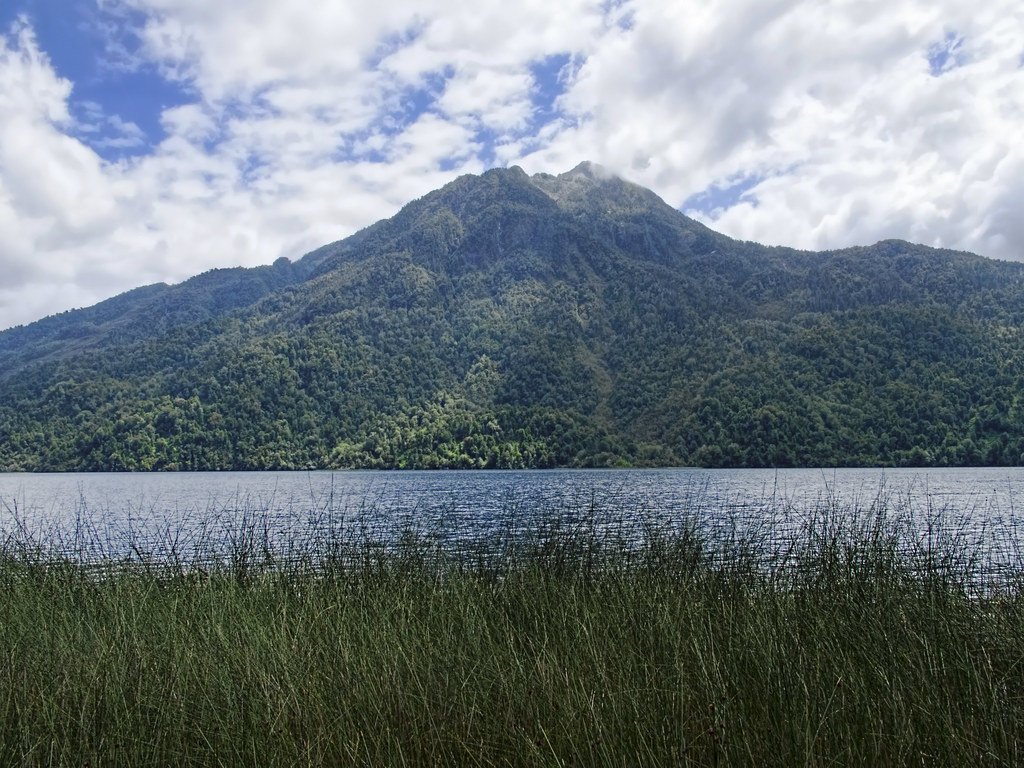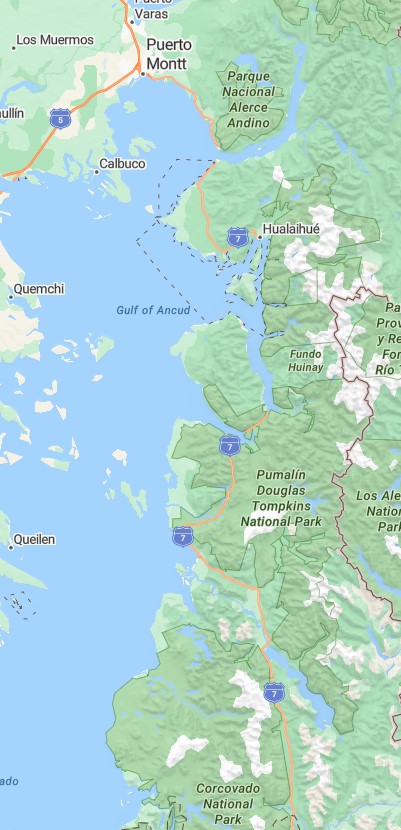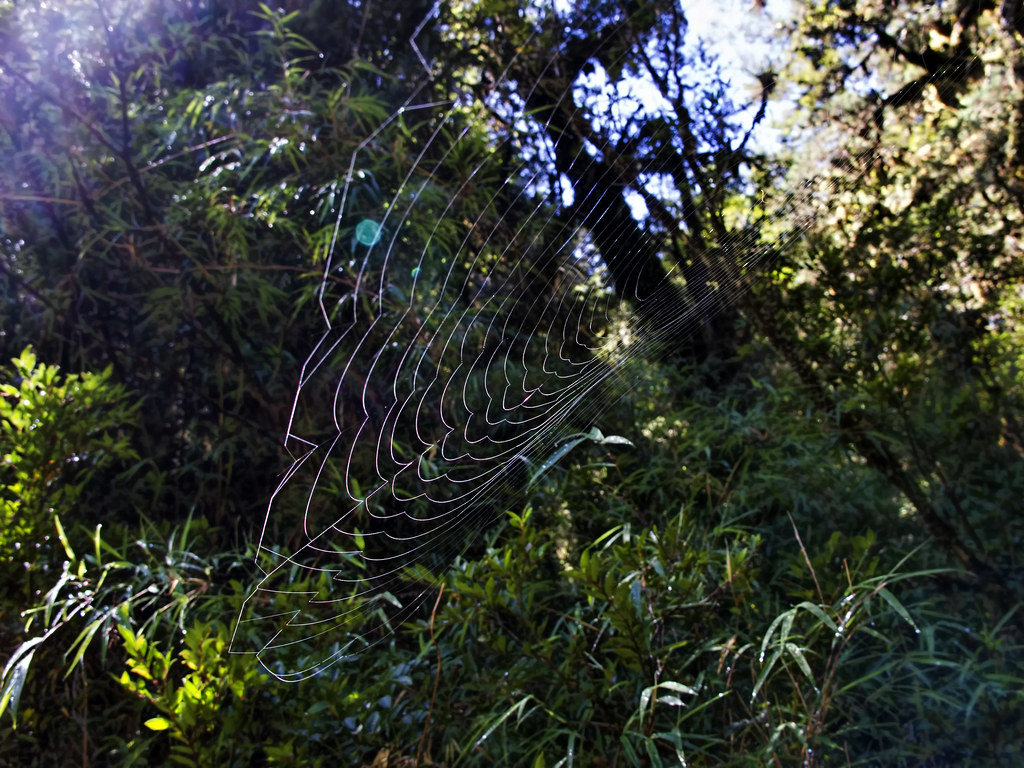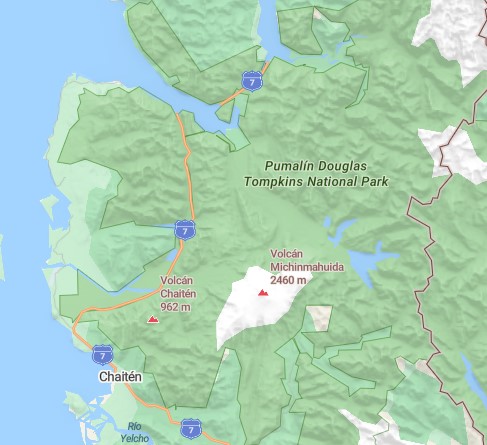
We’re now moving to the parks that surround the crown jewel of northern Chilean Patagonia, Chaitén.
This article will treat you to Pumalín, the sweeping park on the interior or surrounding the eastern side of Chaitén, and you’ll quickly understand why many travelers of all varieties anchor themselves here.
We are working our way south from Puerto Montt as our starting base, and have first traveled to the Alerce Andino and Hornopirén National Parks in our previous chapters.
If you haven’t yet read up on some of the foundations of the entire seventeen-park route, go back and check out my overview post so you can get oriented.
I’ve heard several travelers compare Pumalín to Norway because it is dominated by striking fjords decked with rich green forests and gushing waterfalls. Many residents make their living from fishing the inlets and streams fed by Michinmahuida glacier, which you can hike to see.
Glamping and exclusive fishing expeditions have also made a name for themselves in the area, permitting enough demand that the community has been able to build its own regional airport that I’ll discuss later.
Because Chaitén is highly sought out for various luxury treks and fishing expeditions, it is fortunate to have its own airport that has connections to Puerto Montt. This isn’t an international airport, however, so you can’t get here from anywhere else than from Puerto Montt. I’ll describe the prices and details in the Where to Start section later.
Even though Chaitén is getting down farther to the south of the Los Lagos region, the closest major airport hub would still be Puerto Montt, as the next closest, Balmaceda, is almost twice the distance farther south.
In Puerto Montt, you can also reserve airport transfers to pick you up and take you to your hotel or to the bus station.
There is no fee to access Parque Nacional Pumalín and its trails. However, you do need to register your visit.
There are two ways to do so:
You can register your visit at the visitor information center or guard post at the park entrance. You don’t receive a permit in the formal sense of a bureaucratic document. It is a simpler and kinder process of just being recorded in the guest book of the park so the rangers know of your presence and when you plan to return.
The most onerous, but it may be necessary in cases where you doubt you will pass a formal ranger station while in the park. In these rare cases, you should visit a branch of CONAF in the town you’re in, which is the government ministry that oversees the national parks.
I’ve supplied a list of addresses in this same section of the head overview article.
Because there is no fee, the online option that can be used for other parks to both pay and register is not available for Park Pumalín. You can only use the park entrance or CONAF agency options, and most just check in at the park entrance.

You can either fly in to Puerto Montt, the largest city of southern Chile, or read our article on how to get to Puerto Montt by bus from Santiago, which also describes some top attractions to check out when you get there.
To make it even more convenient, we have private drivers available to get you from and to the airport, or for full drives all throughout the Los Lagos and Chiloé regions.
Flights connecting the other airport hubs in this article (Balmaceda and Punta Arenas) are also available in Puerto Montt, plus to the smaller airport in Chaitén, but read more below as flying to Chaitén has several caveats that might dissuade you.
If you are starting in Puerto Montt at the bus station, or continuing from Lenca or Hornopirén from hiking in the other parks, you want to seek out the Buses Kemel line. The bus trip takes approximately ten hours (from Puerto Montt) and they go all the way to Chaitén, including two short ferry crossings from Caleta La Arena to Puelche, and Pillan to Caleta Gonzalo. These are not reservable online at this time.
Lastly, Puerto Montt is the head harbor for the southern Chile ferry system, which I highly recommend using to get a beautiful trip across the Reloncavi bay directly to Chaitén. They have daily departures at 23:00 (and 12:00 pm on Mondays) and you can reserve online by choosing the Austral reservation from the search results here.
If you want alternatively to begin near the southern part of the Los Lagos region, this is a longer journey and there are other parks in between that I’ll discuss in further chapters of this series. I would not recommend at all going directly to Chaitén from Coyhaique or Puerto Aysén.


Photo by Dan Lundberg, Creative Commons CC BY-SA 2.0 via Flickr.
Open all year
Topography: Temperate Rainforest
Climate: Rainy but mild
It’s easy to understand why this park was the first of the major conservation projects embarked upon by environmentalist and philanthropist Douglas Tompkins, whose name is now included in the park’s formal name. It is so completely breathtaking and fragile all at the same moment, that you can sense why we all need to hold it dear.
The park has received numerous accolades for being one of the best maintained and accessible in the country, and there are not only many trails throughout it, but you also can see equally pristine parts by kayak going through the fjords.

Come to see an abundant of evergreens native to the region like alder, elm, cinnamon, cypress, and olive, to name just a few. Lovers of wildlife come to see everything from bats to foxes, deer and puma, or the constantly entertaining river otters. Yes, because this is equally a rich marine ecosystem, from your kayak you will also likely see penguins, pelicans, herons, owls, flamingos, and condors, but that’s not even close to an exhaustive list.
In 2008, the park and neighboring Chaitén suffered from a terrible blow from Chaitén volanco, which is within the parks western boundary and you are allowed to hike up its slope to see how nature is reclaiming it. On the opposite side of the park, there’s another volcano, but more trekkers are interested in the glacier that sits on its side.
|
Name
|
Distance
|
Hiking Time (round-trip)
|
Difficulty
|
Features
|
Open
|
|---|---|---|---|---|---|
|
Cascada Caleta Gonzalo
|
3.5 km
|
3 hours
|
Medium
|
Gonzalo Waterfall
|
All year to the river only
|
|
Laguna Tronador
|
4 km
|
4 hours
|
Difficult
|
mountain lagoon
|
All year
|
|
Los Alerces
|
700 m
|
40 minutes
|
Easy
|
Ancient Alerce trees
|
All year
|
|
Volcan Chaitén
|
3 km
|
2.5 hours
|
Difficult
|
rim of volcano
|
All year
|
|
Cascadas Escondidas
|
3 km
|
2 hours
|
Medium
|
three waterfalls
|
All year
|
|
Lago Negro
|
800 m
|
30 minutes
|
Easy
|
bird watching on lake
|
All year
|
|
Volcán Michimahuida
|
14 km
|
10 hours
|
Difficult
|
Michinmahuida Volcano glaciers
|
All year
|
|
Interpretive trail
|
2 km
|
1 hour
|
Easy
|
Alerce forest
|
All year
|
|
Ranita de Darwin
|
3.5 km
|
1.25 hours
|
Easy
|
Forest regrowth
|
All year
|
|
El Mirador
|
2.5 km
|
1 hour
|
Medium
|
slope of Michinmahida volcanic vents
|
All year
|
|
El Ventisquero
|
15 km
|
6 hours
|
Medium
|
base of Michinmahuida volcano
|
All year
|
The park opens at 9:00 am. Park rangers say all hikes should be taken in the morning hours, because you will not be able to finish any of the longer trails before the park must close and be empty at 5:30 pm. Make sure to plan on finishing your hike no later than 4 pm.
Camping is not allowed.
The access points or trailheads are scattered around the side of the park, so plan ahead where you will be staying the night and depart from the town of Chaitén before 9 am in order to get to the trailhead you want.
You can also stay in the highly recommended picturesque village of El Amarillo, on the banks of river after which is named, Rio Amarillo, which is close to the southern entrance to the park and to the Ventisquero and Ranita de Darwin trails. But this is more a choice for those interested in the village life, some hot springs, and some guided hiking through private land up to the southern face of El Ventisquero glacier. I do highly recommend this for a more blended wilderness/agrariarian/cultural experience.
If you’re looking for easy hikes or for a family outing that isn’t rigorous, choose any of the four hikes in the table above that are 1 hour or less.
Most of the lodges in the Chaitén and El Amarillo area have packages that will include guided hikes and some form of transportation from their lodge into the park. These are usually 3- to 5-day packages priced between 2,000 and 5,000 USD.
For those who are not staying at a lodge and just going directly from getting off the ferry and needing a connection to the park, you can always just hire a taxi from the center of town or from the bus terminal (corner of Libertador Bernardo O’Higgins and Diego Portales) where you will also find the local tourism office. This is a good option for all trailheads on the west and north side of the park.
There is no entrance fee to visit Pumalín. Makes sure you bring waterproof clothing and great hiking shoes.
The famous Route 7 is also called Carretera Austral, and it is the scenic highway into Patagonia. For bus travel, there are no tickets sold online. Go to the Puerto Montt bus terminal and seek out either the bus company Kemel for their regular daily schedules. Depending on the season, they may not go all the way to Chaitén, but there won’t be any problem in the warmer season. You can also look for the tourist transportation service Chaitur Excursions at the terminal, which is a small family-run business focused on tourism in the southern Los Lagos region, and they just have their northernmost outpost in Puerto Montt because that’s where many travelers want to get back to or from the international airport.
For either of these companies mentioned, clearly indicate the trailhead or sendero that you want to be let off at, so they can write it on the ticket for the conductor to be aware, otherwise they will just take you directly to the town of Chaitén.
The trip from Puerto Montt involves two ferry crossings, each of them with a wait time, so basically plan on an all-day trip by land transportation, and only if you take a night bus should you plan on getting directly off the bus to a trailhead in the early morning of the next day. Otherwise, just take the bus to Chaitén, spend the night there at a local hotel (called a cabaña or “cabin”), and then head to a trailhead the next day.
If you’re starting from the town of Hornopirén from the previous trail, it will be a shorter and easier ride, but you will have to coordinate with your local lodging where and how to wait for the bus. You should still leave Hornopirén early in the morning, as you will have a few hours to travel including a ferry crossing before getting to any trailheads.
The ferry service I’m referring to here is a simple canal crossing and it’s free.
You also have the option of hiring private transportation to take you directly from Puerto Montt to Chaiténdown Route 7. For one to two passengers, the cost is around $315, and has the advantage of picking you up directly from your hotel and dropping you off at any of the trailheads you want north of Chaitén, or to the town of Chaitén. It will not go to El Amarillo however, unless you pay a custom fare.
This is still about a 10-hour trip in a car with minimal stops along the way, so plan accordingly what time you want to leave Puerto Montt so that you give yourself ample time to reach your desired trailhead if you’re doing that.
Also note that given the distance, a private shuttle will not wait at the trailhead for you to come back unless the trail takes less than an hour to hike. So if you’re going on a more challenging trail, please have the shuttle take you to a cabaña in Chaitén, then backtrack the next day using a local taxi to your trailhead of choice.
The ferry to Chaitén from Puerto Montt is something you can reserve in advance online. It’s comfortable, accessible, and has departures at 23:00 (11 pm) every day and one at 12 pm on Mondays only. The trip takes less time than the bus, about 8-9 hours.
In Chaitén, you walk two blocks from the pier to the bus terminal. There you can find the tourist information office as well as local transport companies who could take you to park entrances.
Two small regional airlines offer 35-minute flights from Puerto Montt’s La Paloma airport to Chaiten. The cost is usually around $69 USD per person, which is not a bad price for the time savings.
However, there are a few things that may deter you. One is that flights are often cancelled or postponed due to changing weather conditions, which you don’t have to worry about with the bus, ferry or private shuttle. Secondly, there is no set schedule you can rely on, so you have to negotiate with the airline company, and even then it’s all subject to change. Lastly, you are more restricted with how much luggage you bring on these small planes and they are best considered for business travelers with briefcases rather than tourists with their luggage in tow. Overall, these small twin-prop flights are tempting, but come with more risk and hassle that stymies your traveling freedom.
When Chaitén is the destination, the ferry is easily the preferred option, combining the best of affordability, comfort, scenery, fresh air, the ability to walk around whenever you want, and to get your ticket reserved in advance.
The length of the trip is short enough that you don’t need to reserve a sleeper cabin, there are plenty of relaxing and reclining seats on board for you to get some sleep as the ship travels through the night.
You arrive in Chaitén at the perfect time to get some breakfast and then off to some great hiking, or you can drop off some luggage at a hotel and still have time to get to the trailheads in time.
It’s a very efficient and economical option, and perhaps the only downside is that it travels at night, so you don’t get to see much until you get to doc in Chaitén, whereas the bus or private shuttle you have the option to see the landscape of the Austral highway during daylight. Still, you will have plenty of other opportunities to see great landscapes on the trail or on other trips, so it’s not much a loss at all. Take the ferry!
South America Buses (SAB) is the luxury channel of AndesTransit, the land travel transportation schedule and reservation hub preferred most by travelers to Latin America. SAB has a select team of distinguished travel experts who have dedicated themselves to research, document, and curate routes and carriers in South America that meet nothing short of the highest quality standards in land travel.
Other Links
Copyright © 2024 SouthAmericaBuses. All rights reserved.
